
Long-Tail vs. Short-Tail Keywords: Differences, Pros & Cons for SEO
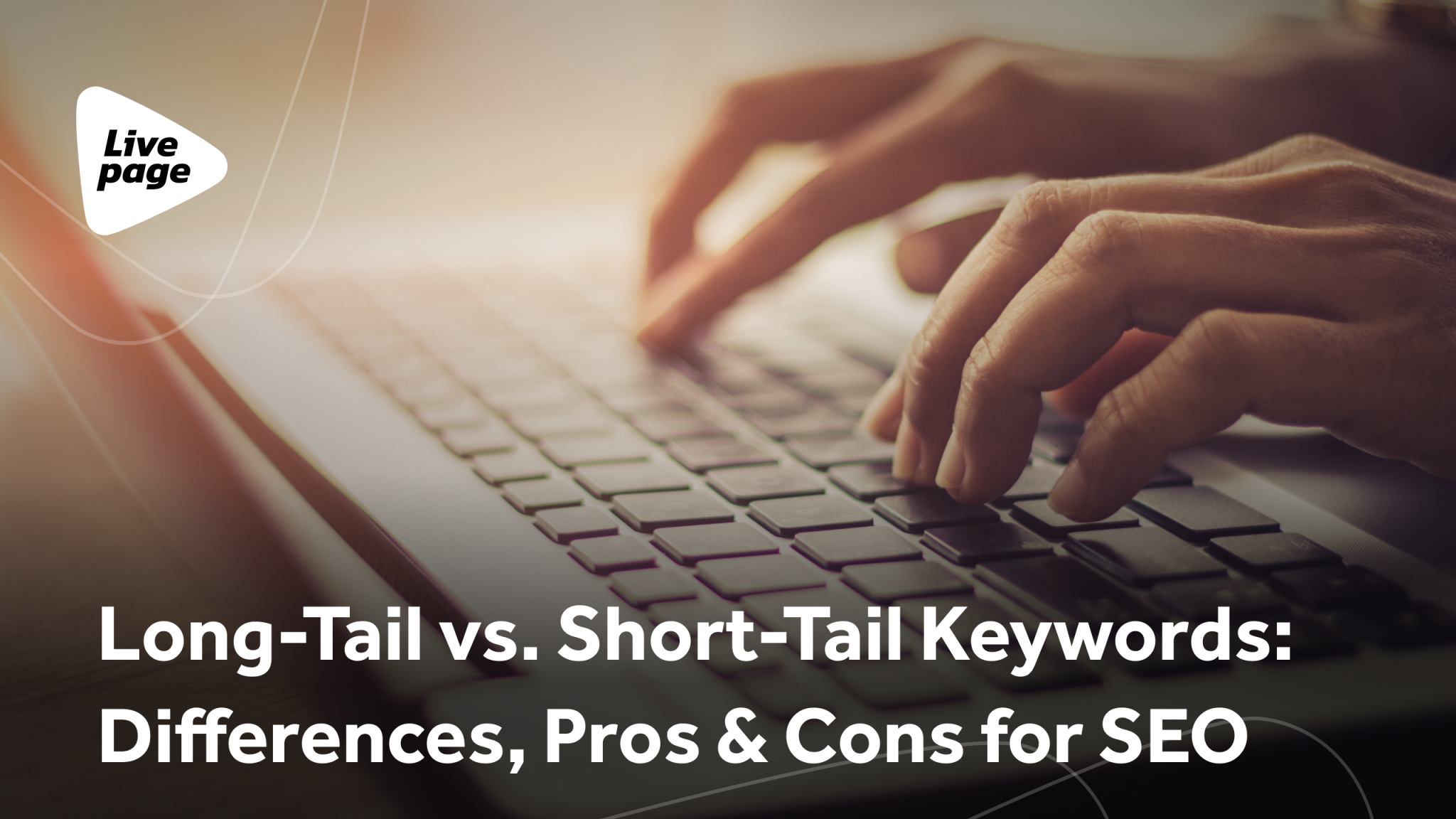
Well-selected keywords are the basis for effective search engine optimization. The better you build the semantic core for your site, the more likely it is to take the top search positions and get relevant leads. It is impossible to succeed in SEO without understanding the specifics of semantic selection, like the difference between short-tail keywords and long-tail keywords.
Read our article to understand how short-tail and long-tail keywords differ from each other and which ones will bring your business better results.
What Are Short-Tail Keywords?
Short-tail keywords usually consist of one to three words, such as “buy car” or “dress.” As a rule, this type of keywords have a higher frequency and higher competition.
- Keyword frequency is an indicator that shows how many times users search for it on average.
- Competitiveness, or keyword difficulty, is an Ahrefs metric that shows how difficult it will be for your site to rank in the TOP 10 for this query.
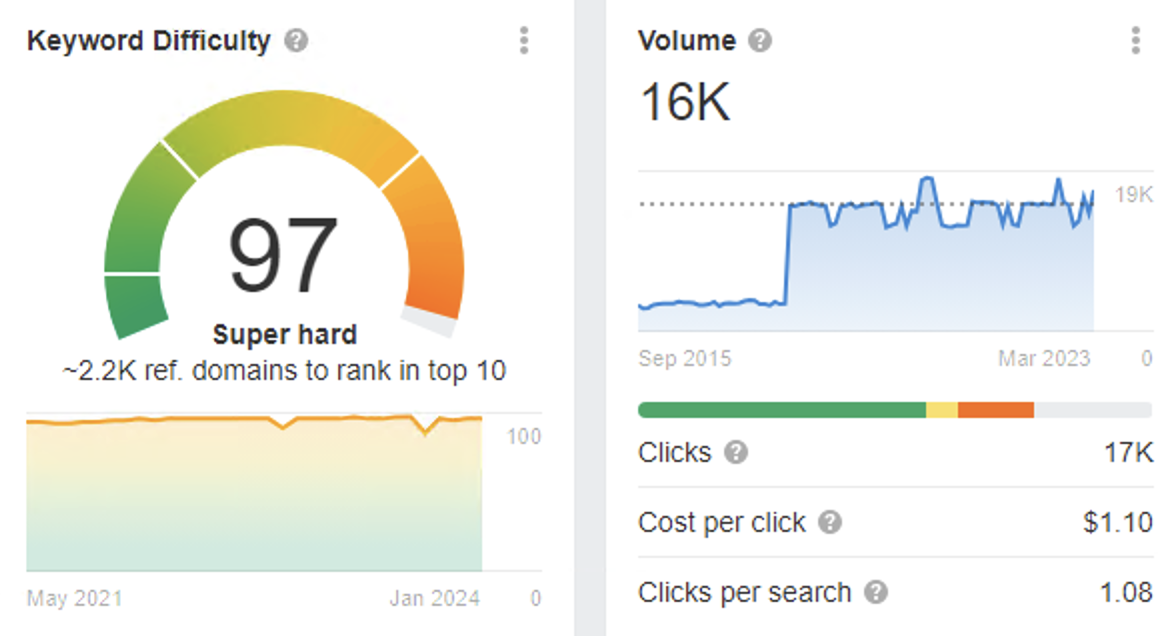
As you can see, the complexity index for the “buy car” query is almost 97 points (out of a maximum 100), which means that it will be next to impossible for a new website or one without a large number of external links, high-quality content, and well-performed technical optimization to take the TOP. At the same time, the frequency of this query is 16,000. This is a considerable number, right?
Even though short-tail keywords can drive more traffic to your site, it doesn’t guarantee that it will be relevant to your business.
This, in turn, will increase the number of returns to search and decrease the conversion rate, which will negatively affect further rankings.
In addition, the search results for short-tail keywords are usually occupied by the big players (old brands with well-developed websites and authority from search engines) you might struggle to compete with.
Pros and Cons of Short-Tail Keywords
The main advantage of short-tail keywords is that they have a higher frequency than their long-tail counterparts. But they also have many disadvantages, including:
- High level of competition. As we have already mentioned, the search results for short-tail queries are usually already occupied by strong players. For example, if you want to promote your website using the “skincare” keyword, you will have to compete with the likes of Sephora, Ulta, and Amazon.
- Not enough specifics. Short-tail keywords are often too general and don’t fully reflect what a person actually wants to find. For instance, when a user makes a “skincare” query, they may want to buy skincare products, find information on how to properly care for their skin, or read reviews of the popular skincare products.
- Low conversion rate. As a rule, the higher the keyword frequency, the fewer users click on it to visit the site. And even among those who do, you will get much fewer leads than if you use long-tail keywords.
What Are Long-Tail Keywords?
Long-tail keywords are phrases that consist of four or more words. When comparing long-tail and short-tail keywords, the first option is typically less popular, but candrive more targeted traffic to a website. Long-tail keyword phrases have a lower frequency than short-tail ones. For example, by choosing the query “skincare routine for oily skin” instead of “skincare,” you can get users who are more likely to become leads, as the page is more likely to be relevant to their query.
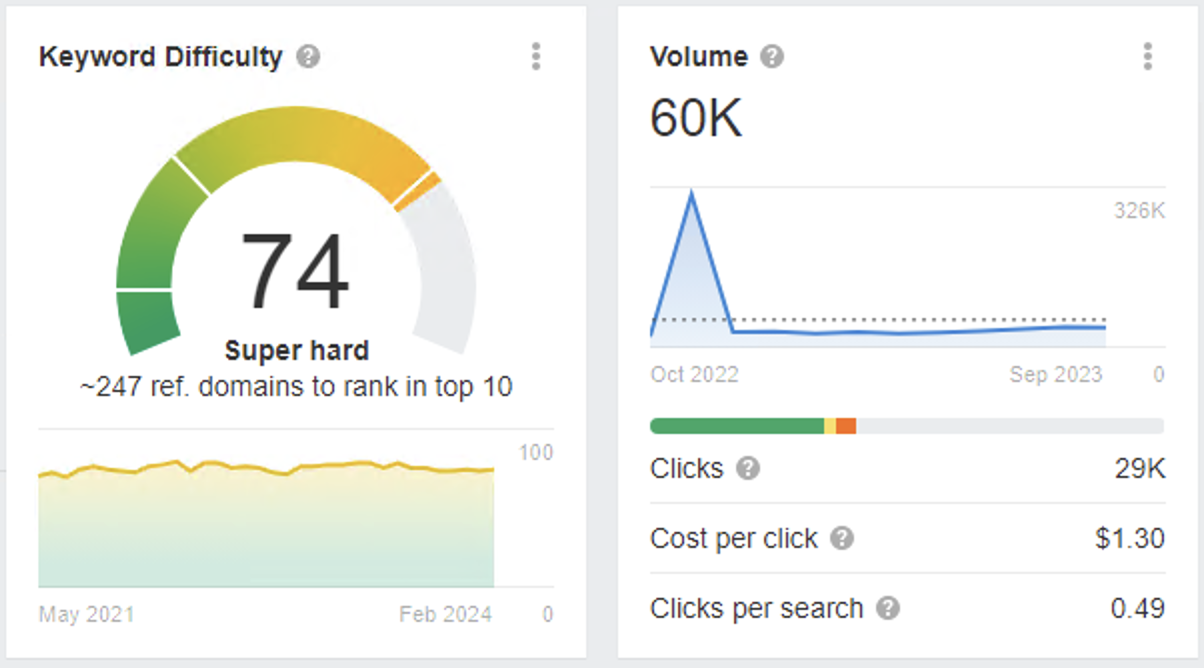
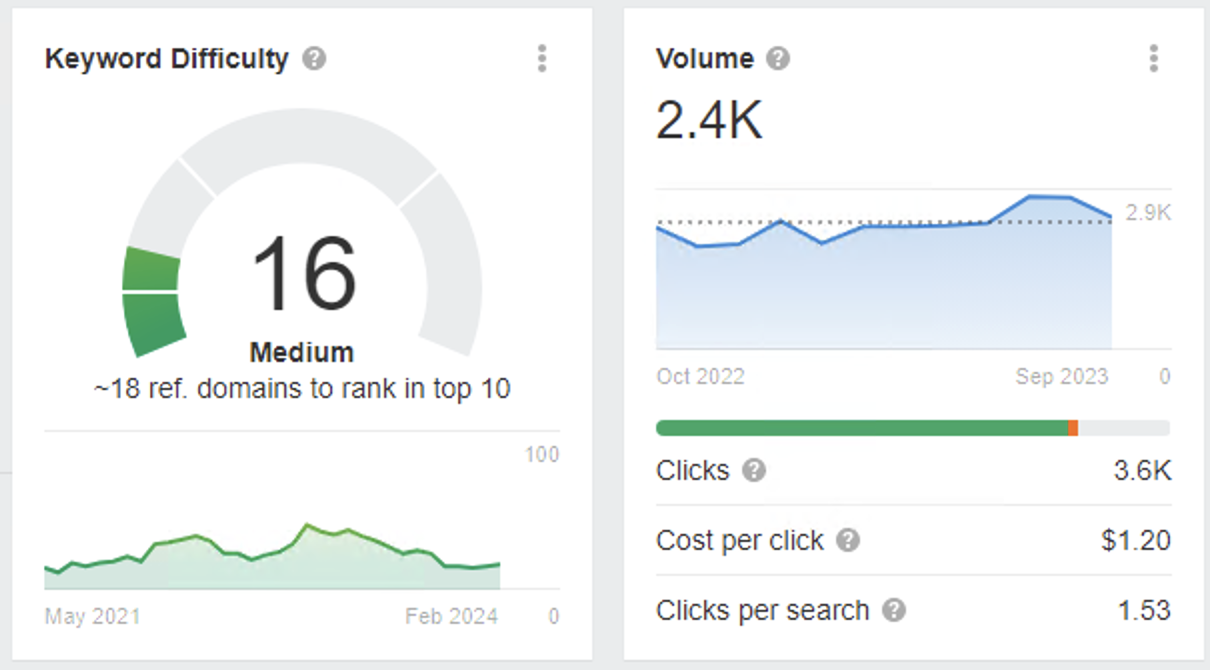
Pros and Cons of Long-Tail Keywords
The main disadvantage of long-tail keywords is traffic. As a rule, it is much lower than that of short-tail keywords. This means fewer users on your site, but those users are more likely to be interested in what you’re offering.
In addition, long-tail keywords are often tricky to organically fit into the page’s content, which makes them more challenging to use. For example, in the screenshot below, you can see long-tail keywords (highlighted in blue) that a copywriter failed to fit organically into the text.
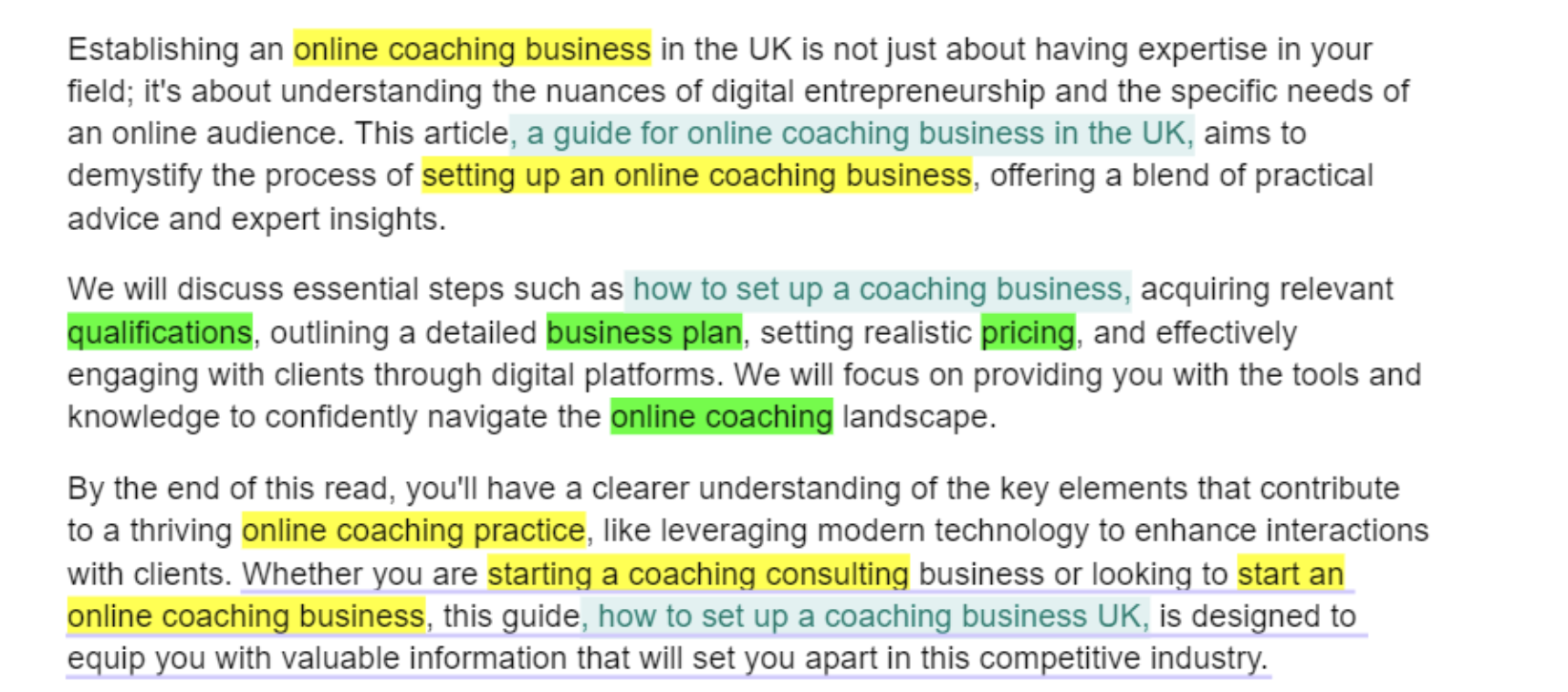
However, long-tail keywords have several important advantages:
1. Low competition. The competitiveness index for the keyword phrase “skincare for reactive sensitive skin” is 3, meaning it will be easy to promote such a page to the TOP. If you have high-quality content on the page and good technical optimization, you can even do it without links.
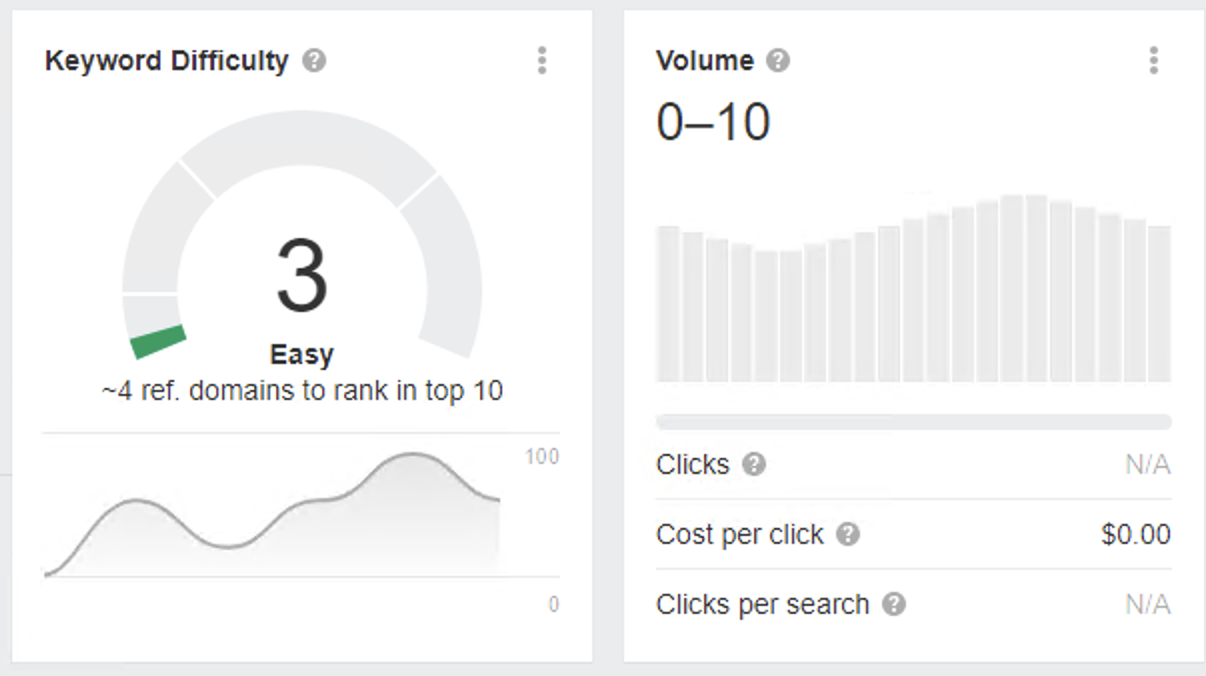
2. Good conversion rate. The conversion rate of long-tail keywords is always much higher because they are more likely to match the user’s intent (in simple terms, the intent is the user’s inner intention/motive).
How to Find Long-Tail Keywords?
There are several ways to search for long-tail keywords, including:
Use Keyword Analysis Tools (e.g. Ahrefs)
Today, many services offer online tools for analyzing keywords. We’ll show you how to quickly find long-tail keywords with Ahrefs, but you can use any similar software.
To find long-tail keywords for your page in Ahrefs, you need to go to Keyword Explorer and enter a general keyword that corresponds to your chosen topic. For example, we can use the general keyword “skincare” for a cosmetics website.
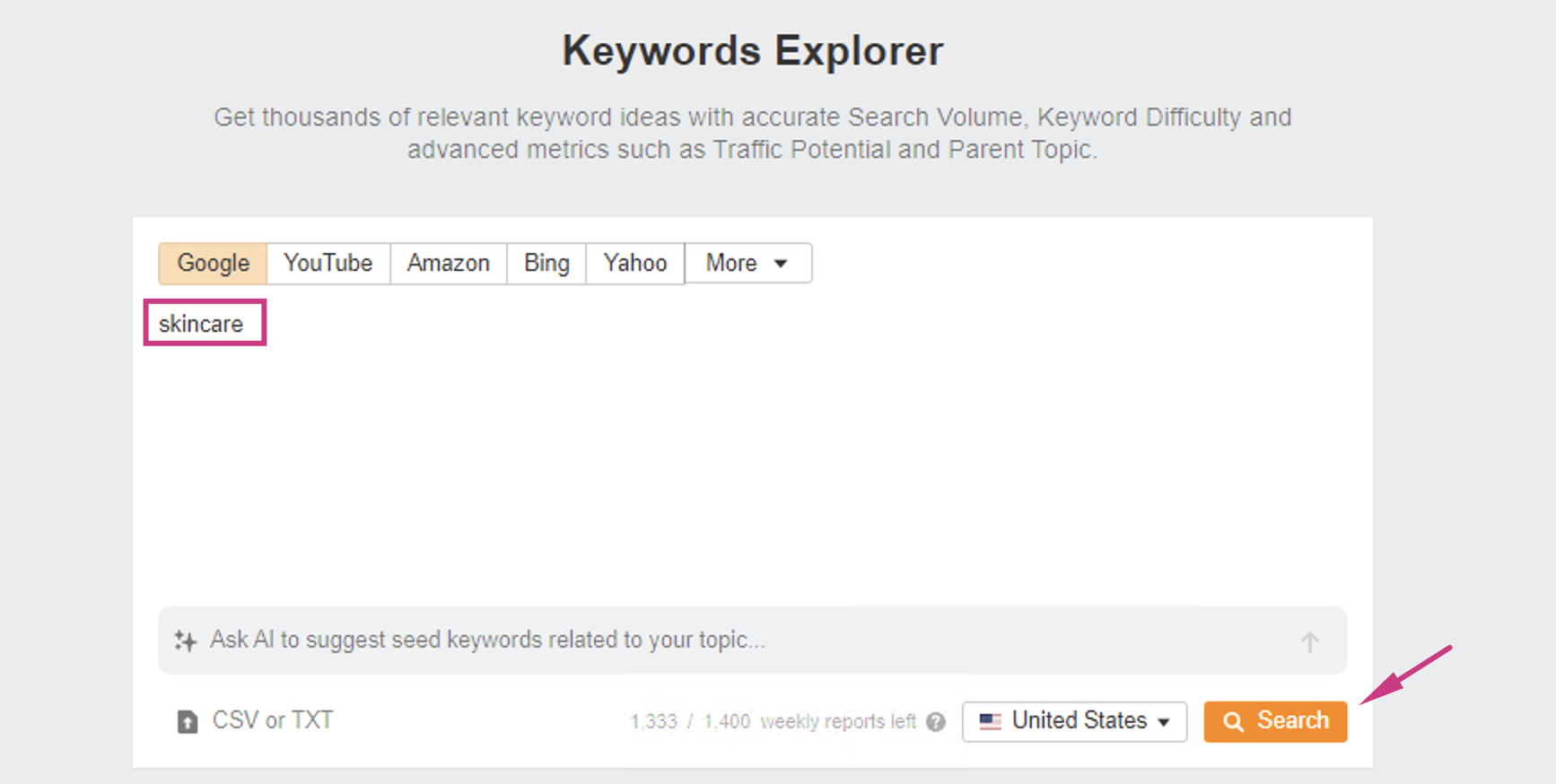
Then, you should go to the Terms Match section, where all the keyword phrases containing our general keyword will be displayed.
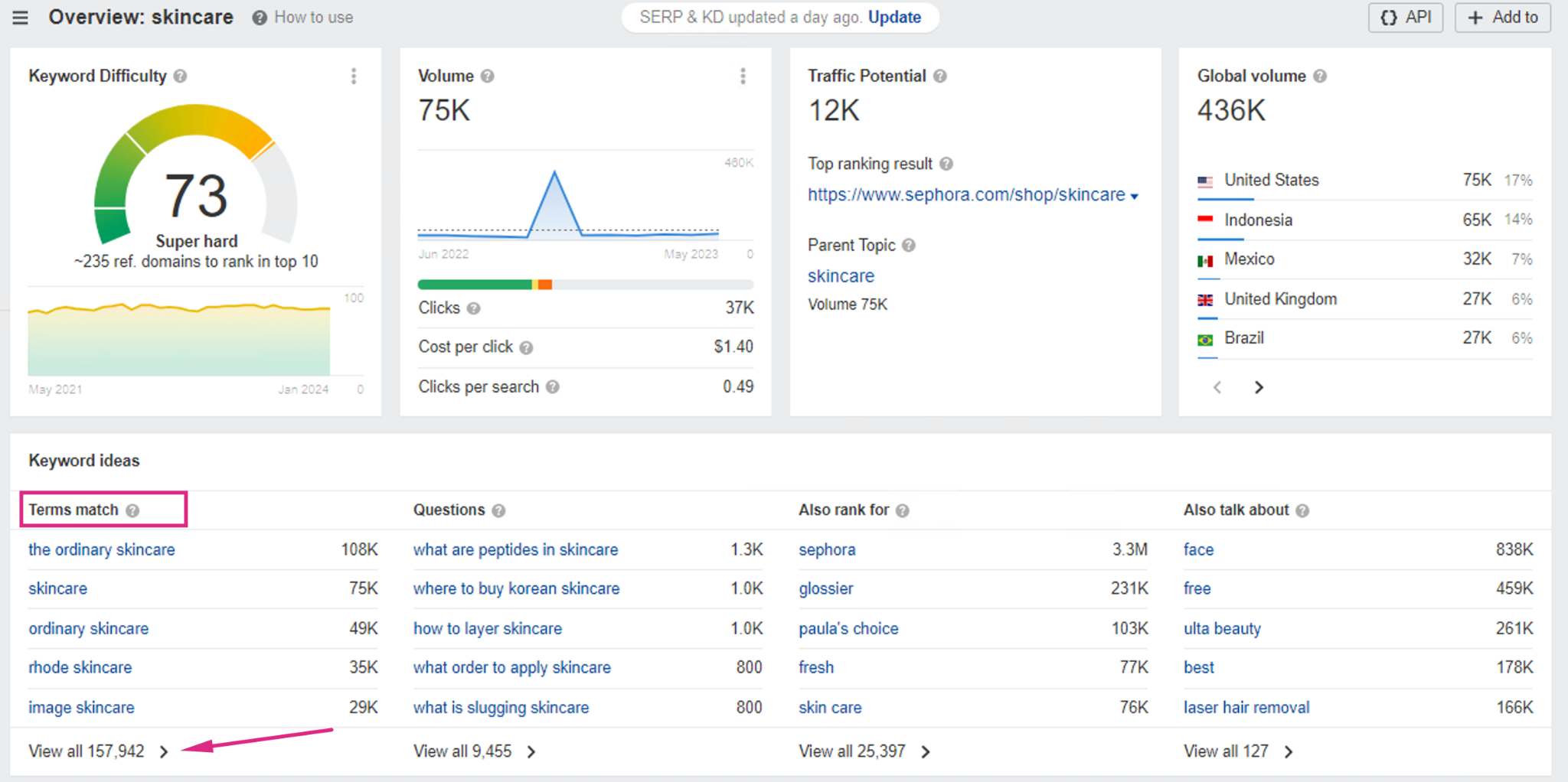
Please note that Terms Match also displays short-tail keywords, so use filters to view only the long-tail options. The Word Count filter can make sure that only the keyword phrases with 4 or more words are shown in the list.

Another way to find long-tail keywords in Ahrefs is to use the KD (Keyword Difficulty) and Volume filters. Long-tail keywords have low competition and frequency, so you can easily find them by setting KD from 0 to 20 and Volume from 0 to 300.

You can also use the Questions section:

This section can be used to find questions that users are interested in. Sometimes, these questions are only suitable for a FAQ at the end of an article or a small section, but sometimes, they can be used to make a whole blog post.
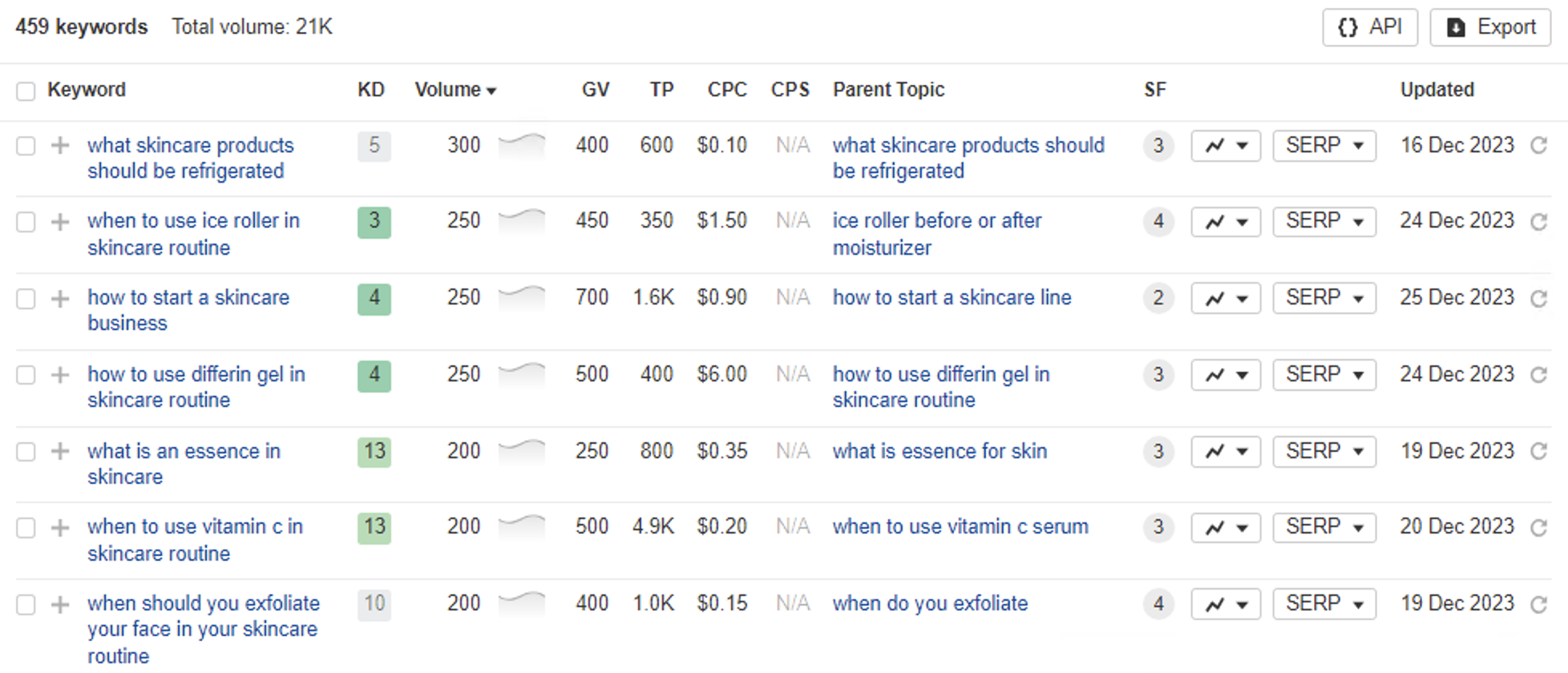
Use Google Autocomplete
Using Google’s Autocomplete feature is not only an effective, but also a completely free way to find long-tail keywords. All you need to do is go to the search box and start typing in your main query:

By entering different keyword combinations into the search bar, you will get different keyword phrases each time, which will help you gather a high-quality semantic core for your page.
You can also try entering a keyword + letter to get more results:

Use Related Searches
Related search queries are another excellent way to find long-tail keywords just by entering your main keyword into the search bar. You can find related queries at the bottom of the search page.
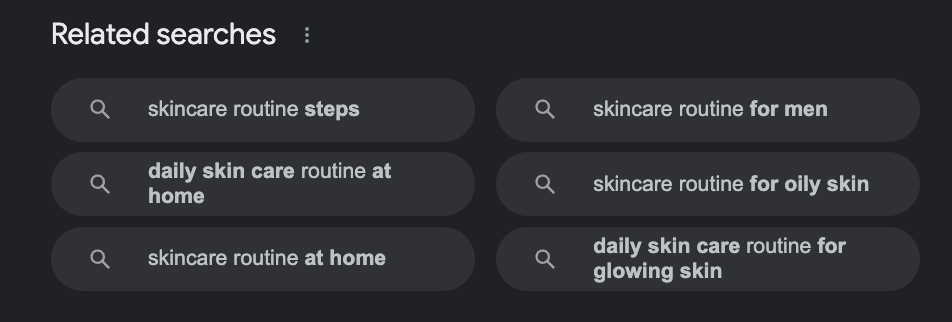
Use People Also Ask
Related Questions is a search block that supplements the results with additional questions that match the query. You can use this block to find long-tail keywords in the form of questions.

Browse Forums
Monitoring forums for relevant semantics is an excellent but time-consuming way to find keywords that are not listed in Ahrefs, Serpstat, etc., but are definitely of interest to your target audience.
To find forums relevant to your topic, you need to enter your keyword + forum in the search bar and be sure to add quotes:
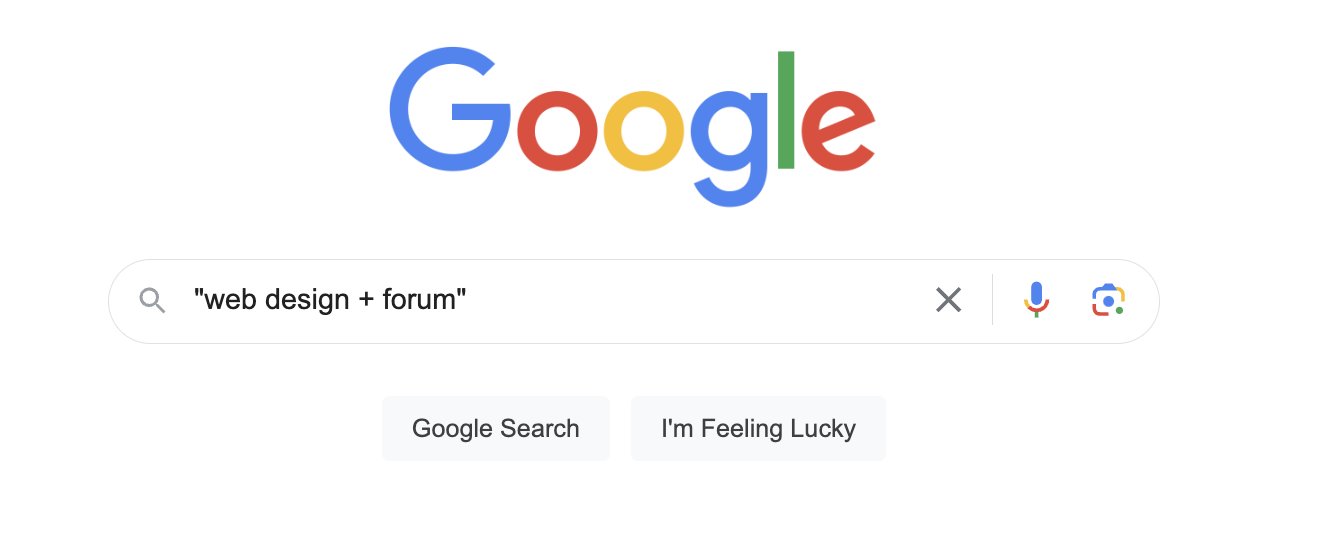
You can also search for forums and even threads on well-known resources, such as Reddit and Quora.

Use Google Search Console Browse Report
One more effective way to look for long-tail keywords is to analyze Google Search Console. The only drawback of this method is that for the semantics to appear on the report page, it must already be created and ranked for some time (the longer it is in search, the more keywords will appear on the report page).
To find this report in GSC, you need to go to the Performance section first:
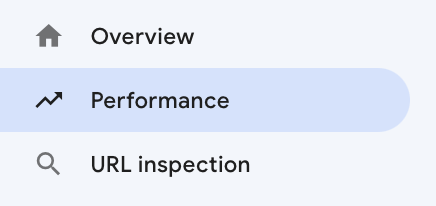
Then, choose to filter queries by the specific page you are interested in:
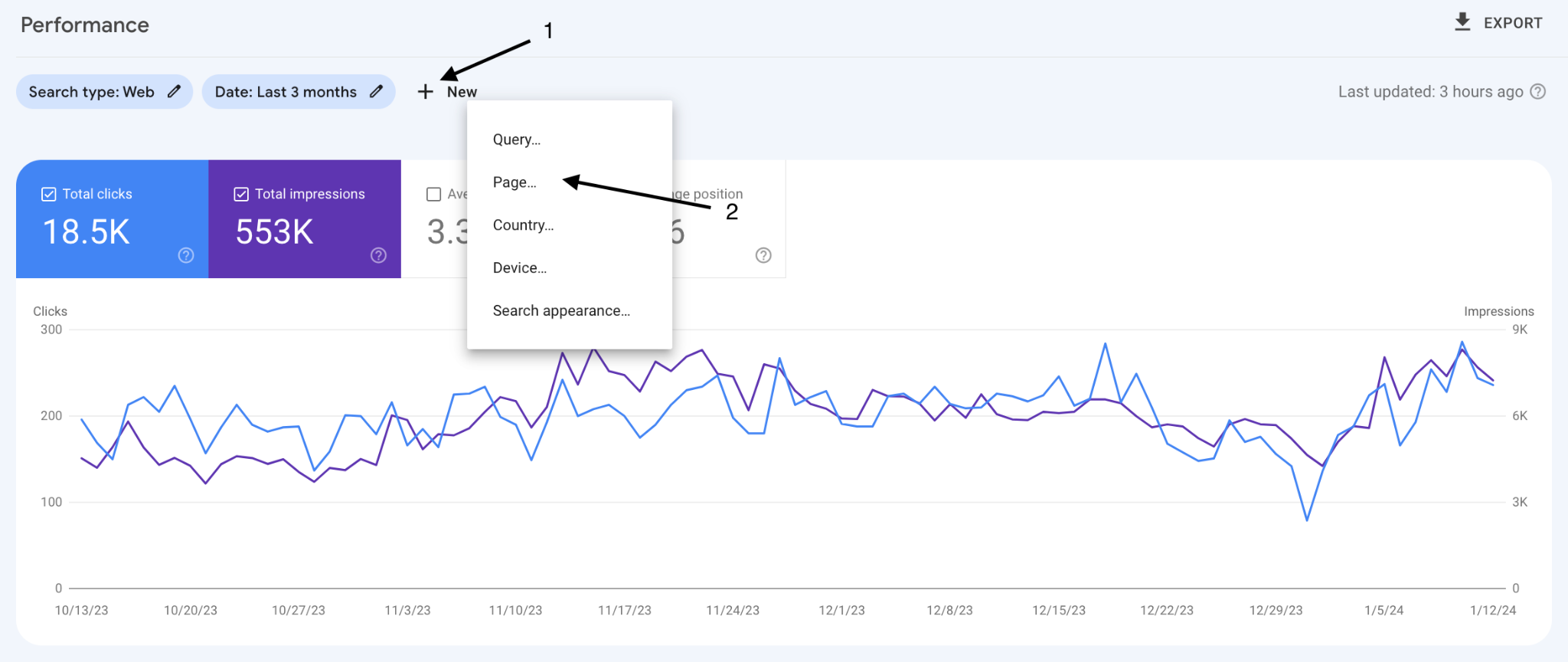
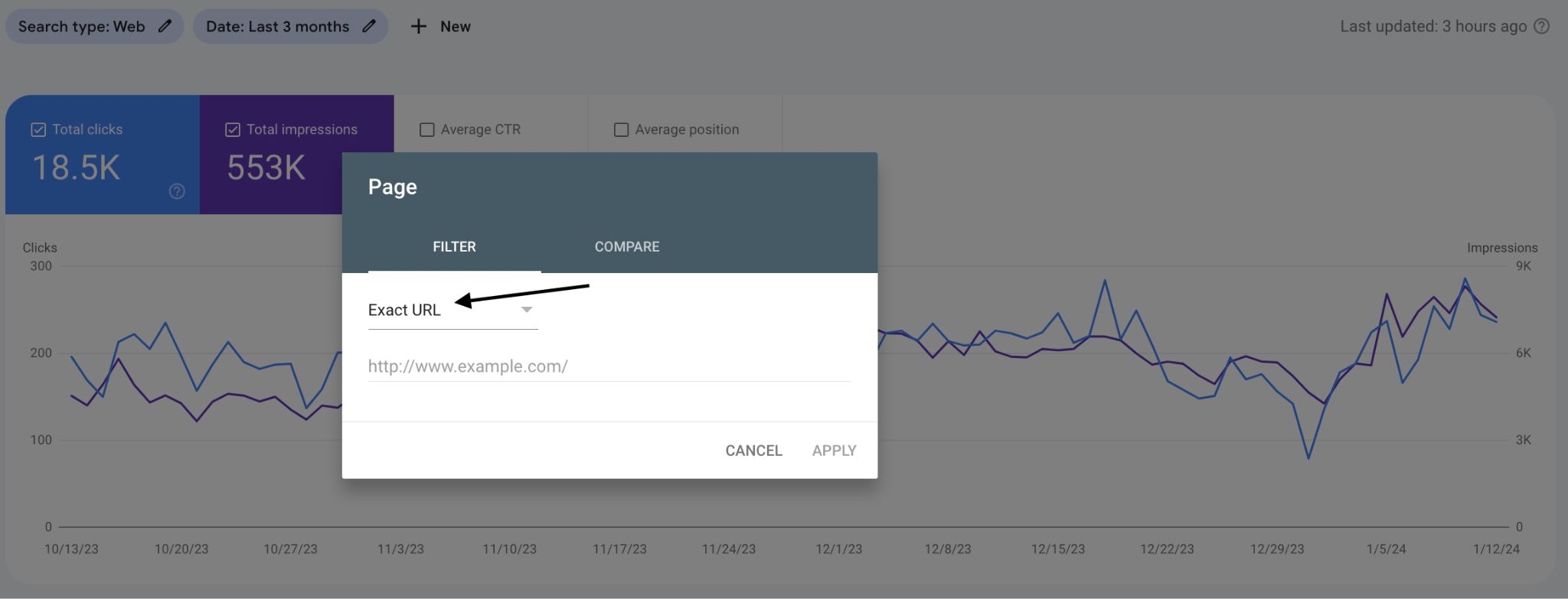
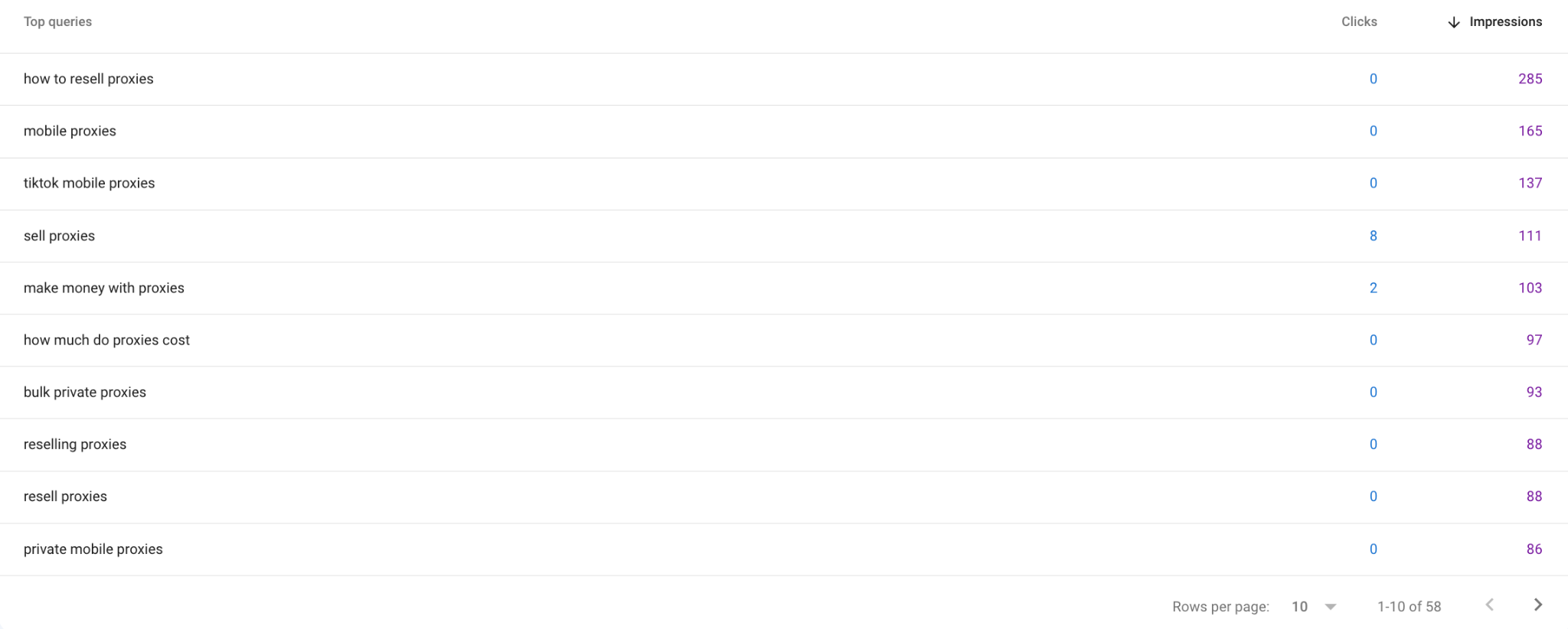
Short-Tail vs Long-Tail Keywords: Which Are Better?
To make it easier for you to navigate the pros and cons of each type of keyword, we have prepared a table:
| Short-tail keywords | Long-tail keywords | |
| Have high competition | ✅ | ❌ |
| Bring a lot of traffic | ✅ | ❌ |
| Attract targeted traffic to the site | ❌ | ✅ |
| Better convert users into leads | ❌ | ✅ |
| Do not have enough specifics | ✅ | ❌ |
As you can see from our long-tail vs short-tail keywords comparison, long-tail keywords win most of the time because they allow you to bring users who are likely to convert into leads to your website.
Wrapping Up
Collecting the semantic core for a website is a painstaking task, but we hope our article will make it a bit easier for you. In the long-tail keywords vs short-tail keywords competition, you should better focus on long-tail keywords strategies to get more targeted traffic, improve the rankings of your website pages in the SERPs, and reduce the number of bounces. If you need assistance in developing a website promotion strategy, and providing SEO keyword research service struggle to build a high-quality semantic core, or just new to the field and not sure where to start, you can always contact our team, and we’ll be glad to help you.



















